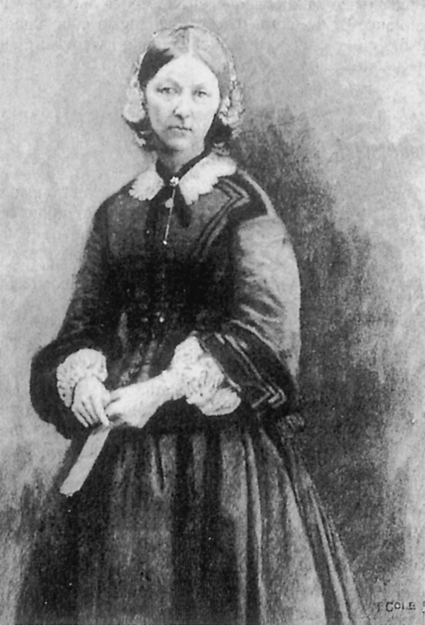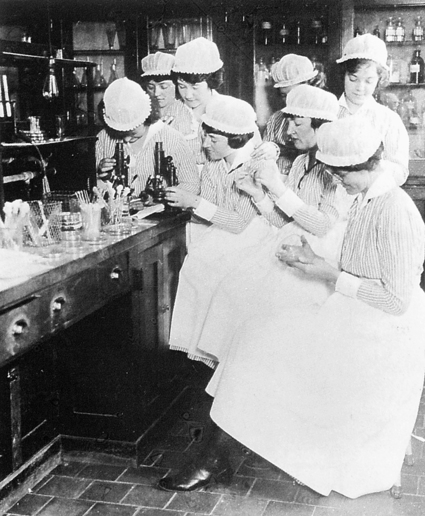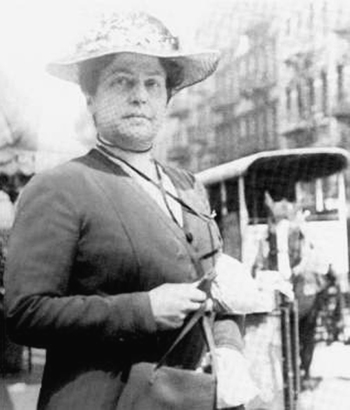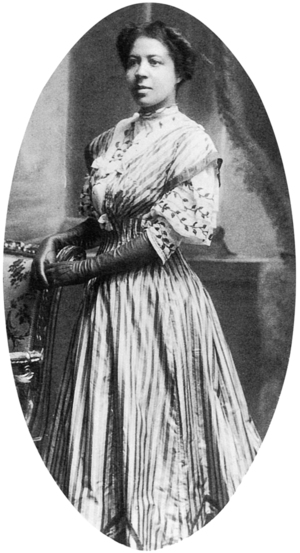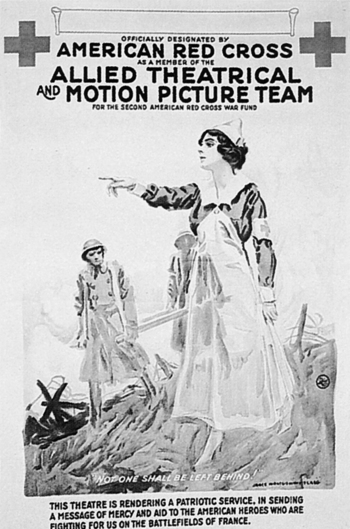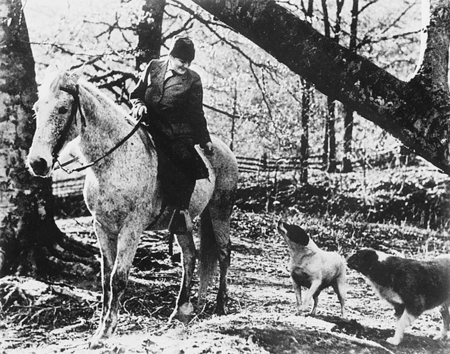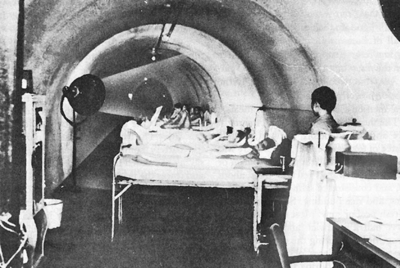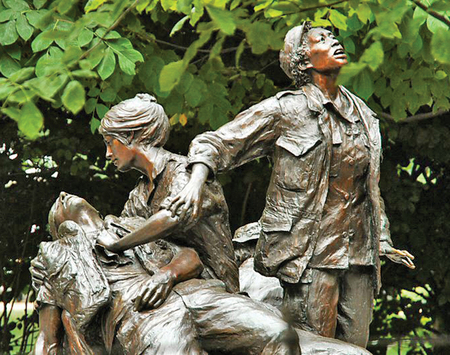After studying this chapter, students will be able to: • Identify the social, political, and economic factors and trends that influenced the development of professional nursing in the United States. • Describe the influence of Florence Nightingale on the development of the nursing profession. • Identify early nursing leaders and identify their significance to nursing. • Describe the development of early schools of nursing. • Explain the role that the military and wars have had on the development of the nursing profession. • Describe the struggles and contributions of minorities and men in nursing. • Describe how common stereotypes of women have affected the development of the nursing profession. • Describe nursing’s effort to manage its image in the media. • Evaluate the implications for nursing as technology continues to be developed. • Describe how nursing has reacted to nursing shortages. To enhance your understanding of this chapter, try the Student Exercises on the Evolve site at http://evolve. elsevier.com/Black/professional. Chapter opening photo from Photos.com. Nursing’s most notable early figure, Florence Nightingale, was born into the aristocratic social sphere of Victorian England in 1820. As a young woman, Nightingale (Figure 2-1) often felt stifled by her privileged and protected social position. As was customary at the time, aristocratic women visited and brought comfort to the sick and poor. The young Florence often accompanied her mother on these visits. At the age of 30 years, against her parents’ wishes, Nightingale entered the nurses’ training program in Kaiserswerth, Germany, where she spent 3 years learning the basics of nursing under the guidance of the Protestant deaconesses. She also studied under the Sisters of Charity in Paris. Care of the sick was often in the purview of women and men in religious orders. Following the Crimean War, Nightingale founded the first training school for nurses at St. Thomas’ Hospital in London in 1860, which would become the model for nursing education in the United States. Her most famous publication is the 1859 Notes on Nursing: What It Is and What It Is Not. In this document Nightingale stated clearly for the first time that mastering a unique body of knowledge was required of those wishing to practice professional nursing (Nightingale, 1859). At the onset of the American Civil War, there were no professional nurses available to tend the wounded and no organized system of medical care in either the Union or the Confederacy. Conditions on the battlefield and in military hospitals were horrible, with wounded and dying men lying in agony in filthy conditions. Appeals for nurses were made, and women on both sides responded. Most significant perhaps was the response by the Catholic orders, particularly the Sisters of Charity, the Sisters of Mercy, and the Sisters of the Holy Cross, who had a long history of providing care for the sick (Wall, 1995). Doubtless the most skillful and devoted of the women who nursed in the Civil War, these religious sisters were highly disciplined, organized, and efficient. Clara Barton is another well-known nursing pioneer. Barton, a Massachusetts woman who worked as a copyist in the U.S. Patent Office, began an independent campaign to provide relief for the soldiers. Appealing to the nation for supplies of woolen shirts, blankets, towels, lanterns, camp kettles, and other necessities (Barton, 1862), she established her own system of distribution, refusing to enlist in the military nurse corps headed by Dorothea Dix (Oates, 1994). Barton took a leave of absence from her patent job and traveled to Culpeper, Virginia. At the scene of the battle, she set up a makeshift field hospital and cared for the wounded and dying. During this battle, Barton gained her famous title, “Angel of the Battlefield.” Her efforts did not end with the war. Barton went on to found the American Red Cross, an organization whose name is synonymous with compassionate service. Although thousands of women supported the war effort, only a few were appointed as matrons of hospitals. One of the earliest to be placed in charge was Phoebe Pember. Before her September 1862 assignment to Chimborazo Hospital, a sprawling government-run institution on the western boundary of Richmond, Virginia, the care was provided by “sick or wounded men, convalescing and placed in that position, however ignorant they might be until strong enough for field duty” (Pember, 1959, p. 18). The move toward formal education and training for nurses grew after the Civil War. Support was garnered from physicians, as well as the United States Sanitary Commission. At the American Medical Association meeting of 1869, Dr. Samuel Gross, chair of the Committee on the Training of Nurses, put forth three proposals regarding nursing training. The most important of these was the recommendation that large hospitals begin the process of developing training schools for nurses. Simultaneously, members of the United States Sanitary Commission, who had served during the war and learned its lessons, began to lobby for the creation of nursing schools (Donahue, 1996). Support for their efforts gained momentum as advocates of social reform reported the shockingly inadequate conditions that existed in many hospitals. The first three American training schools for nurses, modeled after Nightingale’s famous school at St. Thomas’ Hospital in London, opened in 1873. They were the Bellevue Training School for Nurses in New York City, Connecticut Training School for Nurses in New Haven, and the Boston Training School for Nurses at Massachusetts General Hospital in Boston (Donahue, 1996). The first trained nurse in the United States, Linda Richards, graduated in 1874. The Victorian belief in women’s innate sensitivity and high morals led to the early requirement that applicants to these programs be women, for it was thought that these feminine qualities were useful qualities in a nurse. Thus sensitivity, “good breeding,” intelligence, and characteristics of “ladylike” behavior, including submission to authority, were highly desired personal characteristics for applicants. There was a concomitant discrimination against men entering the profession. The number of training schools increased steadily during the last decades of the nineteenth century, and by 1900 they played a critical role in providing hospitals with a stable, subservient female workforce, as hospitals came to be staffed primarily by students (Figure 2-2). Some schools in the North admitted a small number of African-American students to their programs. The training school at the New England Hospital for Women and Children in Boston agreed to admit one African-American and one Jewish student in each of their classes if they met all entrance qualifications. Mary Eliza Mahoney (Figure 2-3), the first African-American professionally educated nurse, received her training there. Historical Note 2-1 gives some details about Mahoney. The development of separate nursing schools for African Americans reflected the segregated American society. African Americans received care at separate hospitals from whites and were cared for by African-American nurses. The first program established exclusively for training of African-American women in nursing was established at the Atlanta Baptist Female Seminary (later Spelman Seminary, now Spelman College) in Atlanta, Georgia, in 1886. This program was 2 years long and led to a diploma in nursing. Spelman closed its program in 1928 after graduating 117 nurses (Carnegie, 1995). Early nursing professional organizations reflected the segregation that characterized post–Civil War America. Initially, minority group nurses were excluded from the ANA. After 1916, African-American nurses were admitted to membership through their constituent (state) associations in parts of the country, but states in the South and the District of Columbia barred their membership. African-American nurses recognized the need for their own professional organization to manage their specific challenges. Martha Franklin sent 1500 letters to African-American nurses and nursing schools across the country to gather support for this idea (Carnegie, 1995). In response, the National Association of Colored Graduate Nurses (NACGN) was formed in 1908 in New York with the objectives of achieving higher professional standards, breaking down discriminatory practices faced by “Negro” nurses in schools of nursing and nursing organizations, and developing leadership among African-American nurses. The group dissolved in 1951 after deciding it had met these objectives. The ANA had by that time committed full support to minority groups, as well as abolishment of discrimination in all aspects of the profession. Early in the twentieth century, the young profession of nursing was called on to address the serious health conditions related to the influx of immigrants who came seeking work in the factories of the Northeast. Poverty-stricken and overcrowded, primitive living conditions in inner city tenements became a target for infectious diseases. It was in response to these conditions that the Henry Street Settlement was established on New York’s Lower East Side in 1893. Its founder, Lillian Wald (Figure 2-4), obtained financial assistance from private sources and began the first formalized public health nursing practice. Her colleague, Lavinia Dock, a social activist and reformer, assisted Wald in providing services through visiting nurses and clinics that cared for well babies, treated minor illnesses, prevented disease transmission, and provided health education to the neighborhood (Cherry and Jacob, 2005). The nurses were relentless in their goal to improve the health of the immigrants who were seeking better lives in America (Figure 2-5). Historical Note 2-2 describes another pioneering nurse, Margaret Sanger, whose work was inspired by the plight of immigrant women on the Lower East Side (Kennedy, 1970). Sanger became the face of the battle for safe contraception and family planning for women. Her work was sometimes dangerous and always controversial, yet she persisted in her work to preserve reproductive and contraceptive rights for women. The Henry Street Settlement still functions today to fight urban poverty in New York’s Lower East Side, serving all ages with a variety of health services, social services, and the arts (www.henrystreet.org). A short video featuring the interesting, remarkable history and work of Henry Street Settlement is available on their website. Tuberculosis was a major health problem in the teeming slums of the newly developing cities. Dr. Edward T. Devine, president of the Charity Organization Society, noted the high incidence of tuberculosis among New York City’s African-American population. Aware of racial barriers and cultural resistance to seeking medical care, Dr. Devine determined that a “Negro” district nurse should be hired to work in the African-American community to persuade people to accept treatment. Jessie Sleet Scales (Figure 2-6), an African-American nurse who had been trained at Providence Hospital in Chicago, a hospital exclusively for “colored people,” was hired as a district nurse on a trial basis. Her report to the Charity Organization Society was published in the American Journal of Nursing in 1901, titled “A Successful Experiment”: In 1898, the United States Congress declared war on Spain, and once again, nursing had a major role in the care of the sick and injured in war. Anita M. McGee, MD, was appointed head of the Hospital Corps, a group formed to recruit nurses. Encouraged by Isabel Hampton Robb and the fledgling Nurses’ Associated Alumnae of the United States and Canada, McGee initially wanted only graduates of nurse training schools in the Hospital Corps (Wall, 1995). It soon became apparent that this requirement could not be met. A widespread epidemic of typhoid fever created a greater need than anticipated, and as a result others, including the Sisters of the Holy Cross and untrained African-American nurses who had had typhoid fever in the past, were accepted for service (Wall, 1995). Namahyoke Curtis was employed as a contract nurse by the War Department during the Spanish-American War, making her the first trained African-American nurse in this capacity. Although McGee and Robb had to enlist untrained persons to care for the sick and wounded during the Spanish-American War, their efforts set the stage for the development of a permanent Army Nurse Corps (1901) and Navy Nurse Corps (1908) (Figure 2-7). The institution of state licensure for nurses was a huge milestone for nursing in the early twentieth century. Early efforts at licensure were not well received. After an educational campaign, the ICN passed a resolution asking each country and state to provide for licensure of the nurses working there. As a result, state legislatures in North Carolina, New Jersey, New York, and Virginia passed what were termed permissive licensure laws for nursing in 1903. Nurses did not have to be registered to practice but could not use the title of registered nurse (RN) unless they were registered. By 1923 all states required examinations for permissive licensure, but these examination were not standardized (Cherry and Jacob, 2005). It was not until the 1930s that New York became the first state to have mandatory licensure; however, this was not fully mandated until 1947. In 1950 the NLN assumed responsibility for administering the first nationwide State Board Test Pool Examination. A key event during this decade was the publication of the first edition of the American Journal of Nursing in October 1900. Those working to bring this project to fruition included nurse leaders Isabel Hampton Robb, Mary Adelaide Nutting, Lavinia L. Dock, Sophia Palmer, and Mary E. Davis. Sophia Palmer, director of nursing at Rochester City Hospital, New York, was appointed as the first editor, with “the aim of the editors to present month by month the most useful facts, the most progressive thought and the latest news that the profession has to offer in the most attractive form that can be secured” (Palmer, 1900, p. 64). Two significant events coincided in 1917 to challenge nursing: the United States entered World War I, and an influenza epidemic swept the country. The concept of using trained female nurses to care for soldiers had been proved in earlier wars; therefore when the United States entered the war in Europe, the National Committee on Nursing was formed (Dock and Stewart, 1920). This committee was chaired by Mary Adelaide Nutting, professor of Nursing and Health at Columbia University, and included Jane A. Delano, director of Nursing in the American Red Cross, among others. Charged with supplying an adequate number of trained nurses to U.S. Army hospitals abroad, the committee initiated a national publicity campaign to recruit young women to enter nurses’ training (Figure 2-8), established the Army School of Nursing with Annie Goodrich as dean, introduced college women to nursing in the Vassar Training Camp for Nurses, and began widespread public education in home nursing and hygiene through Red Cross nursing. Historical Note 2-3 describes the impact of the influenza epidemic on the nation and the profession. By the time World War I ended, nursing had demonstrated its ability both to provide care to the war wounded and to respond effectively to the influenza epidemic at home. In 1920 Congress passed a bill that provided nurses with military rank (Dock and Stewart, 1920). The 1920s also saw increased use of hospitals and an acceptance of the scientific basis of medicine. Two other noteworthy events of the decade included the publication of the Goldmark Report, a study of nursing education (discussed in Chapter 7) that advocated the establishment of collegiate schools of nursing rather than hospital-based diploma programs, and establishment of programs in rural midwifery. An important development in the pre-Depression eras was the establishment of the Frontier Nursing Service (FNS) in 1925. Mary Breckinridge, a nurse and midwife, established the Kentucky Committee for Mothers and Babies, later known as the FNS. This service provided the first organized midwifery program in the United States. Nurses of the FNS worked in isolated rural areas in the Appalachian Mountains, traveling by horseback to serve the health needs of the poverty-stricken mountain people (Figure 2-9). FNS nurses delivered babies, provided prenatal and postnatal care, educated mothers and their families about nutrition and hygiene, and cared for the sick. Through this rural midwifery service, Breckinridge demonstrated that nurses could play a significant role in providing primary rural health care. The Social Security Act (SSA) of 1935, a significant part of President Roosevelt’s plans to bring the nation out of the Depression, enhanced the practice of public health nursing. One of its purposes was to strengthen public health services and to provide medical care for crippled children and the blind. With funds from the SSA, public health nursing became the major avenue for the provision of care to dependent mothers and children, the blind, and crippled children (Cherry and Jacob, 2005). During World War II, the nation’s military once again found itself without an adequate supply of nurses. In response Congress enacted legislation to provide $1 million for nursing education. The military and collegiate programs of nursing formed an alliance to train student nurses in what was known as the Cadet Nurse Corps. Students received tuition, books, a stipend, and a uniform in return for a promise to serve as nurses for the duration of the war in either civilian or military hospitals, the Indian Health Service, or public health facilities (Robinson and Perry, 2001). Approximately 124,000 nurses volunteered, graduated, and were certified for military services in the Army and Navy Nurse Corps during the years 1943 to 1948. Despite ongoing racial segregation, African-American collegiate programs, as well as the NACGN, were active participants in the Cadet Nurse Corps. Historical Note 2-4 describes the courage of nurses in the Philippines at Corregidor and the Bataan during the World War II, who were held in captivity for 3 years in an internment camp. In response to the shortages, “team nursing” was introduced. Team nursing involved the provision of care to a group of patients by a group of care providers. Although efficient, the method fragmented patient care and removed the RN from the bedside. Another response to the shortage was the institution of the associate degree in nursing, discussed in more detail in Chapter 7. As nursing continued to search for its identity, it focused on the scientific basis for nursing practice. Clinical nursing research began in earnest, and the Journal of Nursing Research was first published. Again, war—this time in Vietnam—provided nurses with opportunities to stretch the boundaries of the discipline. The Vietnam War occurred in jungles not easily accessed by rescue workers or medics and without clearly drawn lines of combat. Mobile hospital units were set up in the jungles, where nurses often worked without the direct supervision of physicians as they fought to save lives of the wounded. They performed emergency procedures such as tracheotomies and chest tube insertions, never before executed by nurses. They also had to deal with the lack of support on home soil, where the Vietnam War was controversial and often the cause for widespread protests. The trauma of the battlefield would be intensified by this lack of support at home, and many nurses suffered posttraumatic stress disorder, as did the returning soldiers. In 1993, the Vietnam Women’s Memorial statue was dedicated, featuring two nurses—one white, one black—tending to the prostrate figure of an injured soldier. This memorial captured the difficult and crucial role of nurses in the Vietnam War, and stands in sharp contrast to the days of segregation from earlier decades (Figure 2-10).
The history and social context of nursing
Historical context of nursing
Mid–nineteenth-century nursing in england: The influence of florence nightingale
1861–1873: The american civil war: An impetus for training for nursing
After the civil war: Moving toward education and licensure under the challenges of segregation
The first training schools for nurses and the feminization of nursing
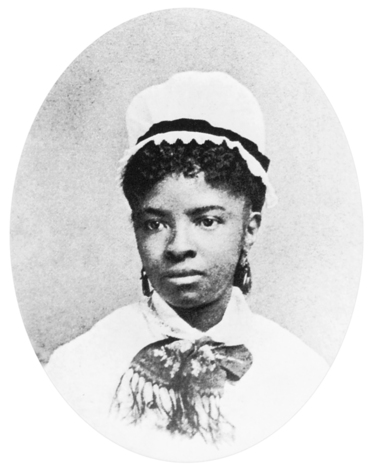
Professionalization through organization
Nursing’s focus on social justice: The henry street settlement
A common cause but still segregated
War again creates the need for nurses: Spanish-american war
Professionalization and standardization of nursing through licensure
1917–1930: The challenges of the flu epidemic, world war I, and the early depression era
1931–1945: Challenges of the great depression and world war II
World war II: Challenges and opportunities for nursing
1945–1960: The rise of hospitals: Bureaucracy, science, and shortages
1961–1982: The great society, vietnam, and the change in roles for women
![]()
Stay updated, free articles. Join our Telegram channel

Full access? Get Clinical Tree


The history and social context of nursing
Get Clinical Tree app for offline access

